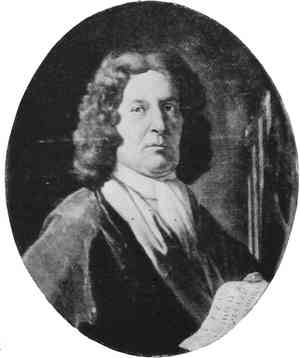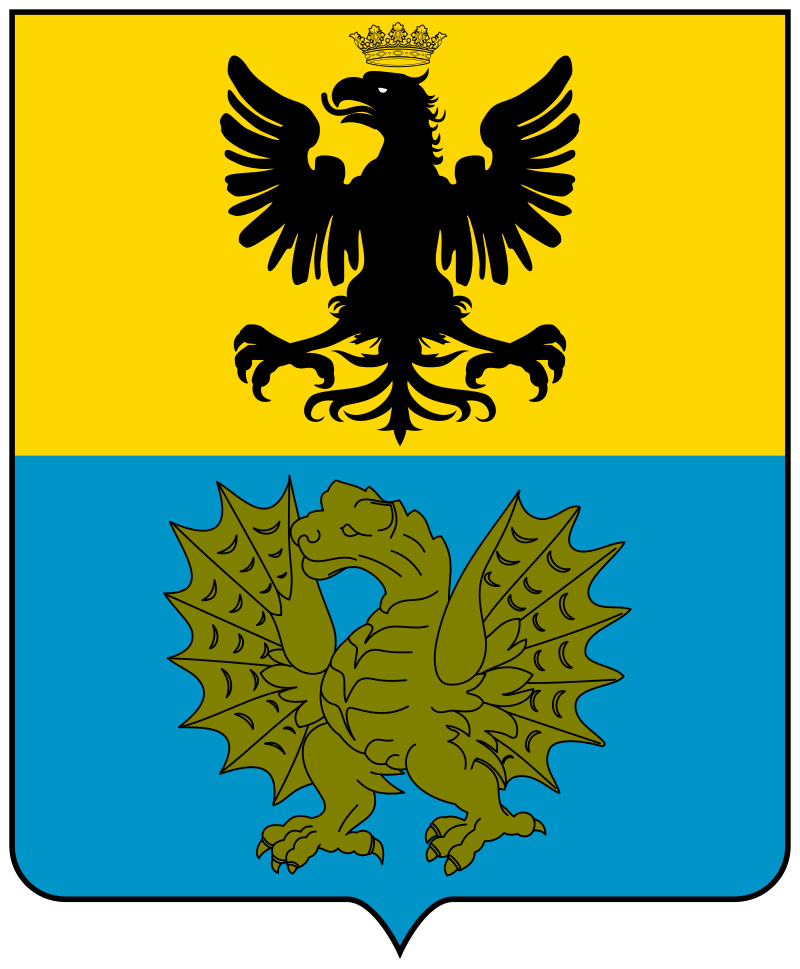


Bernardo Pasquini
Source:
Bernard Gordillo
Born in the Grand Duchy of Tuscany on 7 December 1637, Bernardo Pasquini kept people going to church in Italy as the latter's early dominance in early baroque spread to northern Europe. Along with a lot of keyboard music, Pasquini composed largely cantatas, operas and oratorios, forms arising simultaneously and elemental to the baroque period. The cantata was conceived in the madrigal for one voice to gradually become a larger work embracing multiple instruments and sections which might consist of arias. An aria is a melody for one voice with or without instruments.
Baroque is essentially focus on the voice which had emerged at the turn of the century in a humanistic return to Greek monody distinct from the polyphony of multiple voices as composing had come to be pursued. Baroque was in reaction to composition having become more an undisciplined display of polyphony between voices in order to create counterpoint than genuine song in itself. As music headed into the latter Renaissance composing had become more about composing than its subjects, basically remedied by one voice attending to the spirit of a song, as in ancient Greek drama, measured with (basso) continuo instrumental accompaniment. Fundamental to baroque, (basso) continuo was adopted to keep meter or rhythm and was played on one of various instruments, often left to the discretion of performers, such as harpsichord, viol, et al. As continuo became standard in notation so followed other instruments such as scores for solo harpsichord pieces quickly developing into consorts for multiple instruments. Baroque had been in development for seven decades by the time Pasquini premiered his first oratorio, 'Caino e Abele', in 1671.
Pasquini had studied under Mariotto Bocciantini in Uzzano before following his uncle to Ferrara in 1650 where he became a university organist at Accademia della Morte in 1654. He acquired a position at organ at Santa Maria in Vallicella in Rome in 1657. In 1664 he began doing double duty as organist at both the Basilica di Santa Maria Maggiore and Santa Maria in Aracoeli.
Pasquini acquired the patronage of Prince Giovanni Battista Borghese in 1667 which lasted through the death of Borghese in 1693 and into the reign of his son, Prince Marcantonio Borghese. The House of Borghese was among the most powerful in Europe which had come to prominence in 13th century Sienna. The family shifted to Rome in the 16th century to produce Pope Paul V elected in 1605. The Borghese have since supplied Europe with cardinals, dukes, a second husband to Pauline Bonaparte and a sister to Napoleon, politicians and the Borghese cosmetics brand under Revlon.

Borghese Coat of Arms
Source: Wikipedia
Also major to the advance of Pasquini's career was Queen Christina (1626-1689) who had abdicated the Swedish throne in 1654, converted to Catholicism and moved to Rome where she would live as guest to five consecutive popes. Pasquini dedicated his second opera in 1673, 'L'amor per vendetta ovvero l'Alcasta', to Christina. Moving in this circle until Christina died in 1689, in 1706 Pasquini became a member of the Accademia degli Arcadi, an influential literary and musical think tank formed by Christina in 1656.

Kristina while Queen of Sweden 1632-1654
Portrait by Sébastien Bourdon
Source: Wikimedia Commons
Attaching Pasquini to patrons of considerable sway is a cinch; pasting his works to dates is less readily done, for which reason stacking of Pasquini below is by theme rather than chronology. I've grouped these into arias, cantatas, keyboard pieces and oratorios. Individual arias are the vaster portion of Pasquini's work in general included in cantatas, oratorios and operas or as keyboard pieces. Works without dates below could be any time in a spread of thirty some years.
Well illustrating baroque versus polyphony are, of course, operas. Baroque had been a reactionary erasure of the frivolous, like multiple parts, to better hone in on the character of a song itself, thus emerging with opera dramatic via Peri et al. All the tricks to create counterpoint were tossed out and replaced with an elementary structure of solo voice with continuo a second part. At least fifty arias are strewn along Pasquini's seventh opera eight decades later titled 'L'Idalma, ovvero chi la dura la vince' ('L'Idalma, whoever lasts wins'), a marital intrigue premiering on 6 February 1680 at the Teatro Capranica in Rome. I've not identified the act, scene or incipit of the song below, but it well exemplifies the solo voice with measuring continuo of baroque versus choral polyphony.
Aria from the opera 'L'Idalma' by Bernardo Pasquini
Premiere: 6 Feb 1680 at the Teatro Capranica in Rome
Libretto: Giuseppe Domenico De Totis
Bass in the role of Pantano: Rocco Cavalluzzi
Musical direction: Alessandro De Marchi
This performance: Innsbruck / 2021 [refs below]
Pasquini's aria, 'Non più lagrime nò non piu sospi' ('No more tears no more sighs') is found in a manuscript bound for the Borghese family circa 1680 to 1700 shelved as MS 5015 165 o2 at the Newbury Library. Consisting of 118 leaves, this manuscript includes 34 songs for solo voice and continuo. 'Non più lagrime' is also referenced to MS V.273 at the Biblioteca del Conservatorio G.B. Maritni in Bologna on an October 2011 performance program by Armonia delle Sfere. How these two manuscripts may differ isn't known and Google search for MS V.273 harvests nothing. It is the stated source, however, of the performance below.
'Non più lagrime nò non piu sospi' Aria by Bernardo Pasquini
'No more tears no more sighs'
Soprano by Santina Tomasello Harpsichord: Silvia Rambaldi
Alto recorder: Enrico(?) Zanoni Bass recorder: Daniele(?) Salvatore
This performance: Sala Farnese in Bologna May 2010
Pasquini composed perhaps seventy cantatas, among which was 'Hor ch'il Ciel fra densi horrori' containing 'Miei flutti vastissimi' as movement 6 of 18. 'Ciel fra densi horrori' translates to 'Heaven amidst dense horrors'. This cantata is themed to responses to the Passion of Jesus (crucifixion), in this case by the natural world with 'Miei flutti vastissimi' translating to 'My Vast Waves'. This cantata appears to be referenced as MS I-FAN - Fano n. 5333 at the Biblioteca Comunale Federiciana copied by Giovanni Antelli sometime 1700-1710.
'Miei flutti vastissimi' Aria by Bernardo Pasquini
'My vast waves'
No.6 of 18 of the cantata 'Hor ch'il Ciel fra densi horrori'
Baritone by Furio Zanasi w the Capella Tiberina directed by Giovanni Caruso
Album: 'Passion Cantatas' recorded Oct 2010 [refs below]
Thirteen cantatas for bass and continuo Bernardo Pasquini
Bass: Lisandro Abadie Harpsichord: Alexandra Nigito With Capella Tiberina
Album on Brilliant Classics 2022
Pasquini built a considerable catalogue of pieces for solo harpsichord or organ. In the Haynes Edition of 1964 these are themed as contrapuntal pieces with sonatas, dances in suites with dances individual with arias, variations, and toccatas with tastatas. Keyboard pieces are arranged by Francesco Cera into sixty "versets" in Volume 1 of 'Opere per tasttiera' of 2002 published by Andromeda (Vols. 1-5) and Il Levant Libreria (Vols. 6-7) [Haynes above]. Most titles below are stacked by Haynes number rather than chronology. The first is one of Pasquini's canzoni Francesi (French songs).
'Canzona Francese in F' For keyboard by Bernardo Pasquini
No. 7 of 1964 'Haynes Edition'
Organ: Marju Riisikamp
Pasquini's 'Partite diverse di follia' is a set of 14 variations seven or eight minutes long. This is found on page 229 of 424 in the Berlin Manuscript MS L.215 compiled between 1690 and 1702, possibly transcribed in 1697. The partita was a piece of music for a single instrument which could be broadened into suites with or without themes, in this case folly.
'Partite diverse di follia' D Minor For keyboard by Bernardo Pasquini
Set of 14 variations No. 61 of 1964 'Haynes Edition'
Organ: Edoardo Bellotti
Pasquini's famous 'Toccata con lo scherzo del Cuccù' was composed to imitate the call of the cuckoo bird on organ. His 'Partita sopra la Aria della Folia da Espagna' was another variation with folly for its theme, this time of the Spanish/Portuguese 'La folia'.
'Toccata con lo scherzo del Cuccù' For keyboard by Bernardo Pasquini
Composed 1702 No. 81 of 1964 'Haynes Edition'
Organ: Federico Teti
'Partita sopra la aria della folia da Espagna' For keyboard by Bernardo Pasquini
Variation on the Spanish theme 'La folia' C 1690 (?)
Harpsichord: Claudio Di Veroli
Pasquini's first oratorio 'Caino e Abele' premiered in 1671. His eleventh oratorio, 'La sete di Christo', first saw stage in 1689. The directory at Wikipedia has Pasquini completing fourteen oratori from 1671 to 1694. The same traces eighteen operas from 'La sincerità con la sincerità ovvero il Tirinto' in 1672 to 'Eudossia' in 1792, all premiering in Rome before disseminating to theaters throughout Italy.
'Pur ch'Abel viva' Bernardo Pasquini
'While Abel lives'
From first oratorio 'Caino e Abele' premiering 1671 w libretto by Giovanni Filippo Apolloni
Caino: Nadia Ragni Abele: Claudio Cavina Musical direction: Alessandro De Marchi
Il Teatro Armonico 1990 Album on Symphonia 1990
'La sete di Christo' Bernardo Pasquini
'The thirst of Christ'
Eleventh oratorio premiering 1689 w libretto by Nicolò Minato
Soprano: Francesca Aspromonte as Virgin Mary
Baritone: Mauro Borgioni as Nicodemus / Voice of Christ
Tenor: Luca Cervoni as Joseph of Arimatea
Tenor: Francisco Fernández-Rueda as St. John
Unknown radio broadcast
Pasquini died in Rome on 21 November 1710 to be buried in the Church of San Lorenzo in Lucina.
Sources & References for Bernardo Pasquini:
VF History (notes)
Wikipedia (English)
Wikipedia (Italian)
Audio of Pasquini: Classical Archives
Compositions / Works: Corpus:
Compositions / Works: Individual:
L'Idalma, ovvero chi la dura la vince (7th opera / premiere 1680):
All Music Facsimile 1693 Wikipedia
L'Idalma, ovvero chi la dura la vince (Innsbruck performance 2021 w musical direction by Alessandro De Marchi):
Alessandra Premoli Teller Report
MSS (manuscripts): Biblioteca Apostolica Vaticana
Publications: Editions:
Le Cantate edited by Alexandra Nigito / 2012
Haynes Edition: keyboard works edited by Maurice Brooks Haynes / 1964:
Recordings of Pasquini: Catalogs:
All Music Discogs Music Brainz
Recordings of Pasquini: Select:
Passion Cantatas w Sharon Rostorf-Zamir (soprano) & Furio Zanasi (baritone) / Brilliant Classics 94225 / 2010:
La sete di Christo w Francesca Aspromonte (soprano) / Christophorus CHR77398 / 2015:
Sonate per gravicembalo w Roberto Loreggian (harpsichord / spinet) & Francesco Ferrarini (cello)
Scores / Sheet Music: Corpus:
Free-scores IMSLP Musicalics ScorSer
Scores / Sheet Music: Individual:
Partita sopra la Aria della Folia da Espagna (c 1690?)
Further Reading:
John Collins: An Overview of the Keyboard Music of Bernardo Pasquini / 2010:
Virgilio Virgili: Bernardo Pasquini: Musicista del Secolo XVII / Pescia / 1908
Bibliography:
Arnaldo Morelli: Bernado Pasquini's Cantatas / Royal Musical Association / 2016
Authority Search: BnF VIAF IMSLP
Other Profiles: Classical Connect
Classical Main Menu Modern Recording
hmrproject (at) aol (dot) com